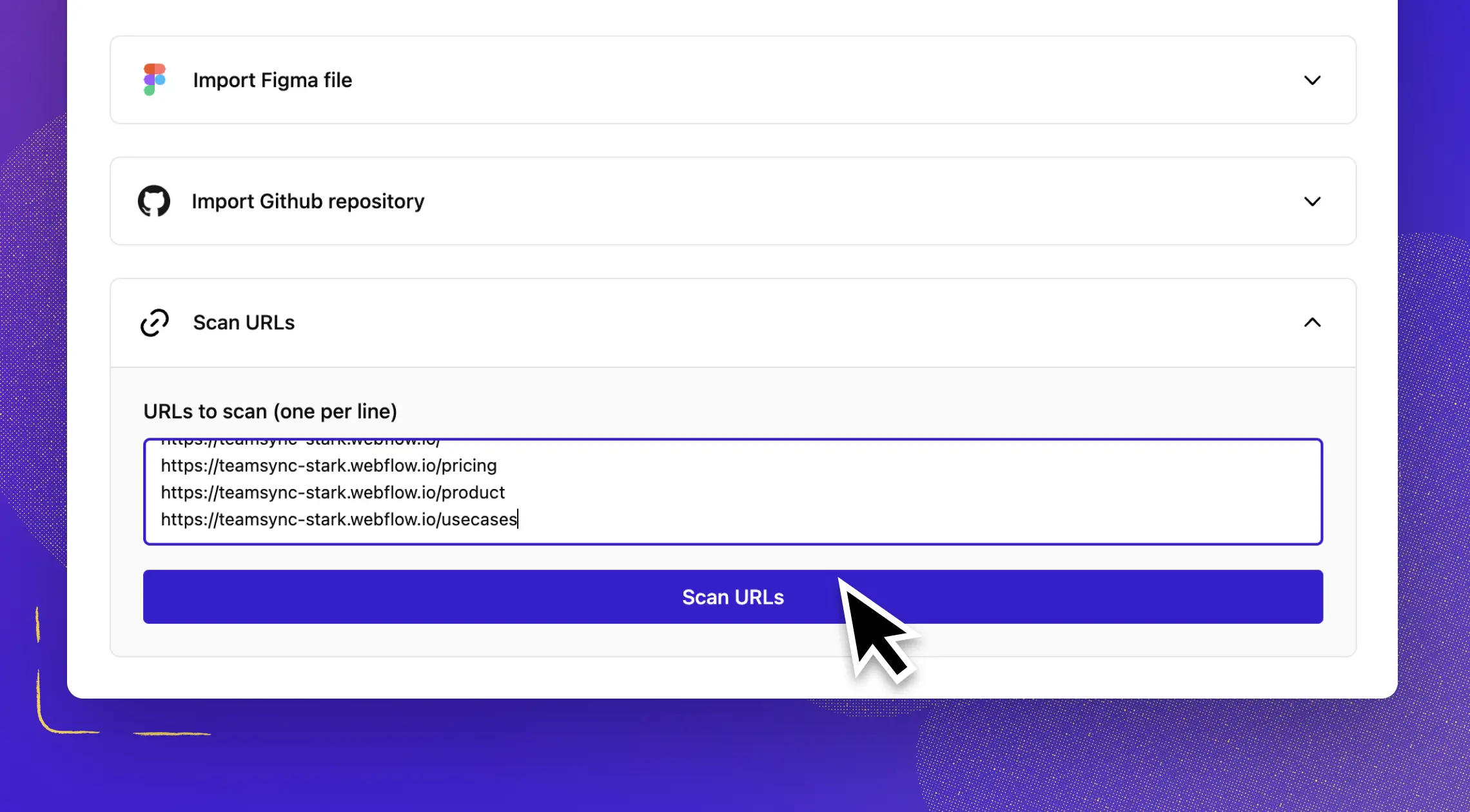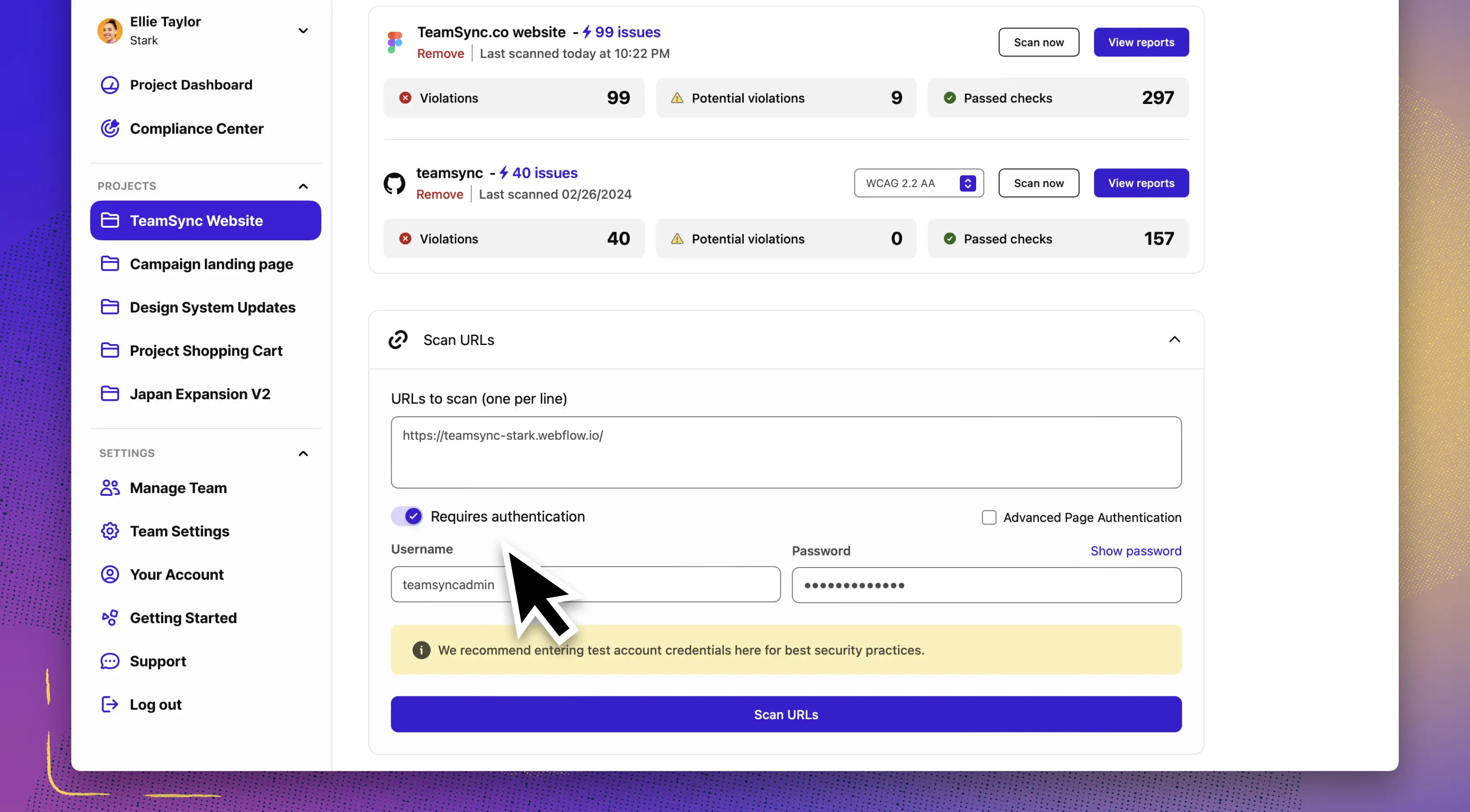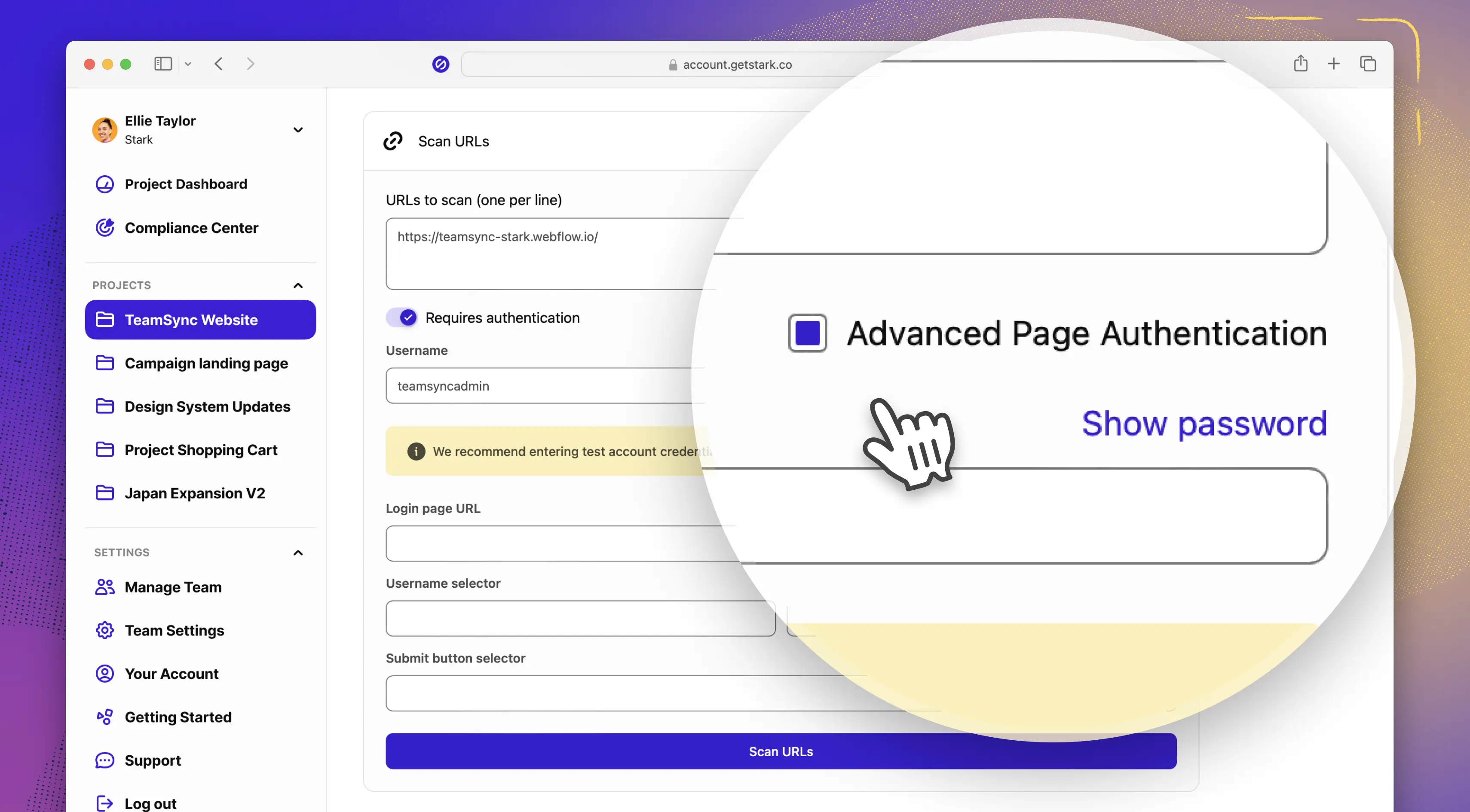Using Live URL Scanning
Get real-time reports and insights on your URLs in production or staging
With the addition of URL scanning, you can now get real-time reports and insights on all your URLs be it in production or staging environments alongside your design files and code repositories. All issues are grouped according to the WCAG guidelines, so it’s super easy to see how many issues per category exist.
To get started:
- Log into your Stark account
- Click
Create a Project - Choose your Project Location: Team or Private
- Scroll to
Scan URLsand add one URL per line - You can now run your first scan! 🎉
- Download and link your teammates to the
Reportto get started fixing each of the surfaced issues.

Authenticated URL Scanning
Stark's URL scanner supports additional inputs for authentication fields. This allows the scanner to attempt to scan pages that sit behind HTTP Basic Authentication, or credential-based username/password authentication. Let's gets started with Basic and Advanced authentication:
Basic Authentication

- Add your URL(s) in the input field, one URL per line
- Turn on
Requires authentication - Enter the username and password credentials
- When you’re ready, click
Scan URLsto add the URLs and credentials to your project
Advanced Authentication

- Add your URL(s) in the input field, separate multiple URLs with a line break
- Turn on
Requires authentication - Enter the username and password credentials
- If your webpage requires advanced credentials such as specific selectors, you can toggle on
Advanced Page Authentication
In order for our scanner to be able to attempt a login, we need a couple things:
- What page is the login form on?
- How can our scanner recognize the username input field?
- How can our scanner recognize the password input field?
- How can our scanner recognize the which button to click to make the authentication request? (Usually this is the Login button.)
- What are the username and password to use?
You’ll see an input field for each of these values.
Everything here should be pretty straightforward with the exception of the selectors, here are the steps to determine these:
- Use the
right click → inspect elementfeature in the browser to view the exact input element for the username and password field. (Be sure to select the input field directly and not an element that’s wrapping the input; it must be an“<input>”element specifically). - You’ll want use the browser developer tools to copy either the CSS Selector or the Full XPath for the username input, password input, and submit button - again, making sure you’re grabbing the selector or xpath for the core
“<button>"or"<input>”element and not a wrapper around it.- If you choose the “xpath” value, you will want to prepend
xpath//to the beginning of the selector value, for a full selector that looks something like this:xpath///path/to/your/element
- If you choose the “xpath” value, you will want to prepend
- Once you have filled out all the required fields, you can go ahead and import the URL and start the scan! 🎉
Stark scans your URLs and finds accessibility issues By default, Stark will start scanning your URLs based on WCAG 2.2 AA compliance levels. You can change the compliance level and WCAG version from the dropdown in the URL asset. As soon as you’ve selected a different compliance level results will be filtered and the selection will be persistent for any future scans.
Have any questions about using Stark's Web App? Don’t hesitate to reach out to us at support@getstark.co.